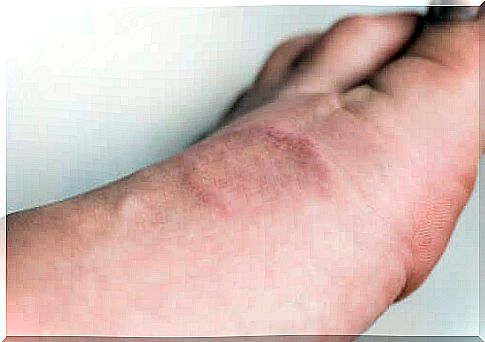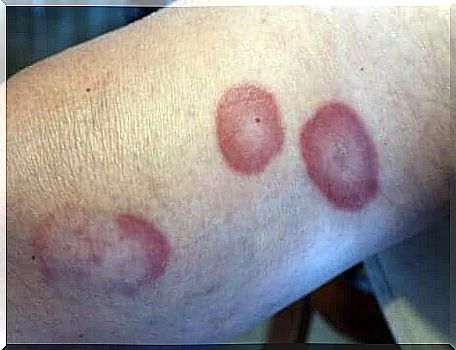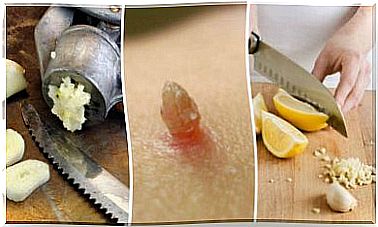What Is Granuloma Annulare?
Granuloma annulare usually does not produce pain but rather itches or cosmetic problems. It is a rare skin disease, the specific cause of which is unknown.

Granuloma annulare is an inflammatory disease that appears on the skin. Its name is due to its circular protuberances which appear in the shape of a ring. These are swollen, reddish lesions that usually go away on their own.
Granuloma annulare is an uncommon disease. It can affect any person but normally appears in children around 10 years old. We do not know precisely its cause but, according to statistics, it affects more women than men.
This pathology does not usually produce pain. Nevertheless, it is quite visible and therefore constitutes an aesthetic problem. In addition, some people complain of itching on the protuberances.
Many of its aspects are still being studied but it seems that this granuloma may be linked to certain infections and even neoplasms. We are now going to explain everything you need to know about granuloma annulare to be able to recognize it.
What is granuloma annulare?
As we have already mentioned, it is an inflammatory and chronic disease of the skin. It consists of the formation of swollen lesions of reddish color, ring-shaped. They usually appear on the hands and feet.
Although we know that granuloma affects women and young people more, we do not know the exact cause. However, we could see that certain factors could trigger it. For example, it can be a side effect of certain medications.
Other possible causes are bites from certain insects and even a reaction to vaccines. Granuloma annulare has also been linked to infections, such as hepatitis. However, it must be emphasized that this is not a contagious disease.
Although granuloma annulare normally goes away after two years without treatment, it is important to study it well. Scientists are trying to demonstrate its association with other systemic pathologies.
It seems that it may be linked to certain diseases of the thyroid gland and diabetes. Some processes could even cause it. In these cases, there are usually more lesions all over the body and they do not respond well to treatment.
What symptoms does it produce?
Granuloma annulare, in addition to protuberances, has no reason to produce symptoms. These lesions can be of different colors, ranging from bluish to a reddish flesh color. They all have an extending ring shape, with a slightly hollowed out center.
The lesions are tender to the touch but do not cause pain. Nevertheless, they can be a cosmetic problem or cause itching, especially when there are a lot of protuberances scattered around the body.
In addition, experts classify the annular granuloma into different classes:
- First, we find the localized annular granuloma, which is the most common type. It usually appears on the hands and feet, and the lesions can measure up to two inches.
- There is also the generalized granuloma, which is the one that spreads all over the body.
- Finally, there is the subcutaneous granuloma. In this case, the protrusions are small and firm, and they normally do not have a reddish color.

How is granuloma annulare treated?
Granuloma annulare causes very characteristic lesions, and it is therefore normally easy to diagnose. Even so, when in doubt, dermatologists sometimes request a skin biopsy to confirm it. As we have already indicated, the protrusions usually disappear on their own after a while.
Thus, the disease lasts a maximum of two years. It is therefore not necessary to treat it. Nonetheless, it is true that granuloma annulare can be aesthetically embarrassing or because of the itchiness it produces.
You should know that there are certain treatment options. In some cases, creams can be used with corticosteroids which make the lesions disappear faster. You can even inject these drugs when you don’t respond to the creams.
Doctors sometimes use light therapy techniques to treat granuloma annulare. Finally, when the lesions are very extensive and generalized, medication is prescribed in oral form. However, the most important thing is to consult your doctor so that he can choose the most appropriate treatment.









